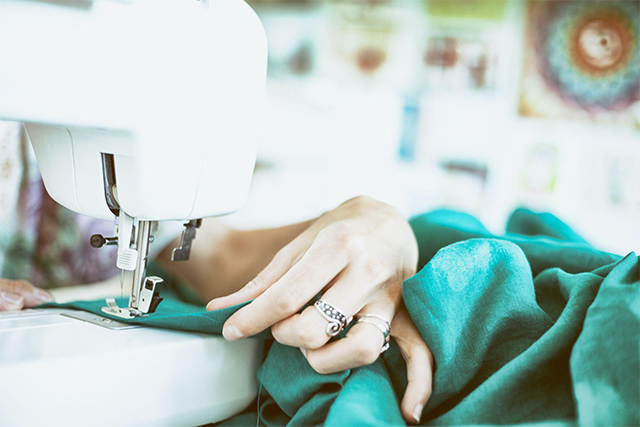Sewing has gained popularity in the last decade as more and more people realize how harmful fast fashion is and turn to more sustainable options. But making your own clothes isn’t just a greener lifestyle — it’s also incredibly fun!
Indeed, many people use sewing projects for stress relief, and sewing circles have long provided a way to initiate friendships and build community. Below, I explain why sewing is a good idea and how to get started.

Why start sewing?
First and foremost, the world of fast fashion is a big-time polluter. According to a Princeton University report, the industry relies on cheap, fossil-fuel-based fabrics that produce more carbon emissions than clothing made from natural fibers. “The fashion industry is currently responsible for more annual carbon emissions than all international flights and maritime shipping combined,” the researcher writes.
If that wasn’t bad enough, fast fashion also consumes 10% of all industrially used water and produces 20% of the world’s wastewater — water that cannot be remediated. In addition, fast fashion clothing is often dyed using toxic chemicals, which pose health risks to workers as well as consumers. Finally, the low quality of these garments means that they wear out quickly, creating mountains of waste.
Refashioning and recycling previously used fabrics allow one to create new items while sparing the landfill. Old bedsheets and t-shirts make great grocery and shopping bags that are easy to sew, and reusing old denim is a particularly trendy way to create new garments. That’s why the first episode of my new reality show “Fabric to Fashion” on Made It Myself TV features a challenge to upcycle jeans.
In addition, sewing can save you and your family money. Hemming pants, sewing on a button, or replacing a broken zipper can be expensive if you hire a tailor, but are completely free if you do it yourself.
What you’ll need to start sewing
You only need a few basic items to start sewing, the most important of which is a quality sewing machine. These don’t have to be expensive, and it’s possible to pick up a used one. If you do, however, take it to your local sewing machine dealer to have it serviced and ensure it has been properly cleaned prior to use.
Next, make sure to acquire universal sewing machine needles in size #80/12, which will work for lightweight fabrics. If you plan on working with other kinds of materials, then add ballpoint, stretch, and denim needles as necessary.
Other supplies to add to your sewing room can include an iron, ironing board, scissors, pins, and measuring tape. Your seam ripper should be sharp and new. Consider investing in a tailor’s clapper to make seams crisp. Finally, some form of fabric-marking tool, like tailor’s chalk, also comes in handy.
How to start sewing
After you’ve obtained your sewing machine, the first step is to learn how to use it. Most sewing machine manufacturers provide online videos or other educational materials that teach people how to use their products, so it’s easier to learn the basics than ever. Sewing machines usually offer far more functionality than most people use them for, though, so even long-time sewists can often benefit from these tutorials.
Other opportunities to learn from expert sewists and designers abound on places like Made it Myself TV and YouTube. Many online sewing instructors offer weekly live shows where you can learn, ask questions, and meet new sewing friends. For instance, I host “Behind the Scenes Live with Angela Wolf” every Wednesday at 1:30 pm EST on Facebook and YouTube in addition to my show, “It’s Sew Easy,” on Made It Myself TV.
Find a sewing personality you enjoy watching and get inspired! It’s usually a good idea to view episodes in their entirety first before trying a technique or project at your own speed.
Your first sewing projects
Keep in mind that mastering a single technique or garment may take a few attempts. Above all, be patient with yourself.
If your machine can do decorative stitches, a simple, fun project is to create a sampler of them. Start by drawing straight lines onto a solid piece of fabric, then sew a different decorative stitch on each. Not only will you get practice stitching in a straight line, but also you will have a sample of each stitch to reference in the future.
To set yourself up for success, I also recommend starting your sewing adventure with quick, easy projects that do not require fitting. Examples include making pillows, pillowcases, and shopping bags.
Start your sewing adventure today
Once you start sewing, you’ll never look at the clothing in stores the same way again. Knowing how to sew will empower you to make your own looks and craft your own personal style, while saving the planet from pollution and waste. Start your sewing adventure today, and this pastime will reward you long into the future.
By Angela Wolf, Host of “It’s Sew Easy” on Made It Myself TV
